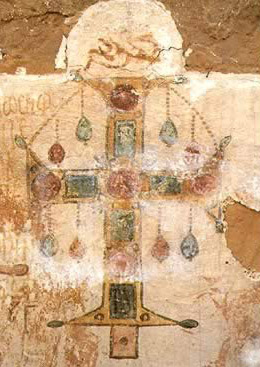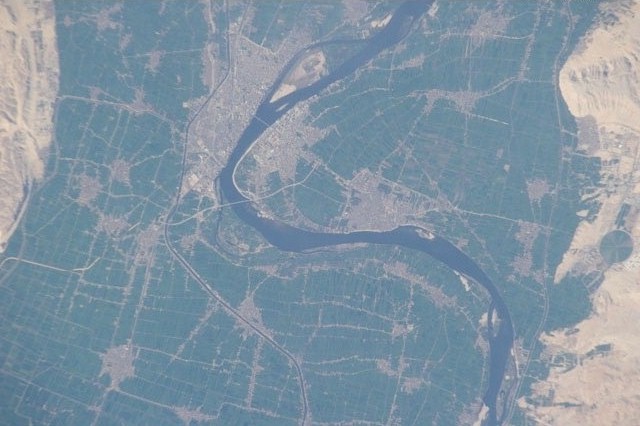|
Alin Suciu
Alin Suciu is a Romanian coptologist and papyrologist. He is a senior researcher at the Göttingen Academy of Sciences and Humanities and docent in Early Christian Literature and Coptic Christianity, Faculty of Theology, University of Helsinki. Biography Suciu holds a PhD degree in religious studies from Université Laval, Québec. He has published articles on ancient manuscripts and biblical, patristic, and apocryphal texts in the Journal of Biblical Literature, Journal of Semitic Studies, Harvard Theological Review, Vigiliae Christianae, Le Muséon, and elsewhere. He maintains a scholarly blog entitled Patristics, Apocrypha, Coptic Literature and Manuscripts. Suciu is a member of the ''Corpus dei Manoscritti Copti Letterari'' (CMCL), an international project which aims to reconstruct codicologically the dismembered Sahidic manuscripts of the library of the White Monastery, situated near Sohag in Upper Egypt. The CMCL project is currently hosted by the Hiob Ludolf Center ... [...More Info...] [...Related Items...] OR: [Wikipedia] [Google] [Baidu] |
Oradea
Oradea (, , ; german: Großwardein ; hu, Nagyvárad ) is a city in Romania, located in Crișana, a sub-region of Transylvania. The county seat, seat of Bihor County, Oradea is one of the most important economic, social and cultural centers in the western part of Romania. The city is located in the north-west of the country, nestled between hills on the Crișana plain, on the banks of the river Crișul Repede, that divides the city into almost equal halves. Located about from Borș, Bihor, Borș, one of the most important crossing points on Romania's border with Hungary, Oradea ranks List of cities and towns in Romania, tenth in size among Romanian cities. It covers an area of , in an area of contact between the extensions of the Apuseni Mountains and the Crișana-Banat extended plain. Oradea enjoys a high standard of living and ranks among the most livable cities in the country. The city is also a strong industrial center in the region, hosting some of Romania's largest companies ... [...More Info...] [...Related Items...] OR: [Wikipedia] [Google] [Baidu] |
Codicology
Codicology (; from French ''codicologie;'' from Latin , genitive , "notebook, book" and Greek , '' -logia'') is the study of codices or manuscript books. It is often referred to as "the archaeology of the book," a term coined by François Masai. It concerns itself with the materials, tools and techniques used to make codices, along with their features. The demarcation of codicology is not clear-cut. Some view codicology as a discipline complete in itself, while others see it as auxiliary to textual criticism analysis and transmission, which is studied by philology. Codicologists may also study the history of libraries, manuscript collecting, book cataloguing, and scribes, which otherwise belongs to the history of the book. Some codicologists say that their field encompasses palaeography, the study of handwriting, while some palaeographers say that their field encompasses codicology. The study of written features such as marginalia, glosses, ownership inscriptions, etc. falls i ... [...More Info...] [...Related Items...] OR: [Wikipedia] [Google] [Baidu] |
People From Oradea
A person ( : people) is a being that has certain capacities or attributes such as reason, morality, consciousness or self-consciousness, and being a part of a culturally established form of social relations such as kinship, ownership of property, or legal responsibility. The defining features of personhood and, consequently, what makes a person count as a person, differ widely among cultures and contexts. In addition to the question of personhood, of what makes a being count as a person to begin with, there are further questions about personal identity and self: both about what makes any particular person that particular person instead of another, and about what makes a person at one time the same person as they were or will be at another time despite any intervening changes. The plural form "people" is often used to refer to an entire nation or ethnic group (as in "a people"), and this was the original meaning of the word; it subsequently acquired its use as a plural form of ... [...More Info...] [...Related Items...] OR: [Wikipedia] [Google] [Baidu] |
Patristic Scholars
Patristics or patrology is the study of the early Christian writers who are designated Church Fathers. The names derive from the combined forms of Latin ''pater'' and Greek ''patḗr'' (father). The period is generally considered to run from the end of New Testament times or end of the Apostolic Age () to either AD 451 (the date of the Council of Chalcedon) or to the Second Council of Nicaea in 787. Eras The Church Fathers are generally divided into the Ante-Nicene Fathers, those who lived and wrote before the Council of Nicaea (325) and the Nicene and Post-Nicene Fathers, those who lived and wrote after 325. Also, the division of the Fathers into Greek and Latin writers is also common. Some of the most prominent Greek Fathers are Justin Martyr, Athanasius of Alexandria, Basil of Caesarea, Gregory of Nazianzus, John Chrysostom, Cyril of Alexandria, and Maximus the Confessor. Among the Latin Fathers are Tertullian, Cyprian, Jerome, Ambrose of Milan, Augustine of Hippo, and G ... [...More Info...] [...Related Items...] OR: [Wikipedia] [Google] [Baidu] |
Coptologists
Coptology is the science of Coptic studies, the study of the Coptic language and Coptic literature.What is Coptology? '''' Origin The European interest in Coptology may have started as early as the 15th century AD. The term was used in 1976 when the First International Congress of Coptology was held in under the title "Colloquium on the Future of Coptic Studies" (11-17 December). This was followed by the establishment of the "[...More Info...] [...Related Items...] OR: [Wikipedia] [Google] [Baidu] |
1978 Births
Events January * January 1 – Air India Flight 855, a Boeing 747 passenger jet, crashes off the coast of Bombay, killing 213. * January 5 – Bülent Ecevit, of CHP, forms the new government of Turkey (42nd government). * January 6 – The Holy Crown of Hungary (also known as Stephen of Hungary Crown) is returned to Hungary from the United States, where it was held since World War II. * January 10 – Pedro Joaquín Chamorro Cardenal, a critic of the Nicaraguan government, is assassinated; riots erupt against Somoza's government. * January 18 – The European Court of Human Rights finds the British government guilty of mistreating prisoners in Northern Ireland, but not guilty of torture. * January 22 – Ethiopia declares the ambassador of West Germany '' persona non grata''. * January 24 ** Soviet satellite Kosmos 954 burns up in Earth's atmosphere, scattering debris over Canada's Northwest Territories. ** Rose Dugdale and Eddie Gallagher become the first convict ... [...More Info...] [...Related Items...] OR: [Wikipedia] [Google] [Baidu] |
Living People
Related categories * :Year of birth missing (living people) / :Year of birth unknown * :Date of birth missing (living people) / :Date of birth unknown * :Place of birth missing (living people) / :Place of birth unknown * :Year of death missing / :Year of death unknown * :Date of death missing / :Date of death unknown * :Place of death missing / :Place of death unknown * :Missing middle or first names See also * :Dead people * :Template:L, which generates this category or death years, and birth year and sort keys. : {{DEFAULTSORT:Living people 21st-century people People by status ... [...More Info...] [...Related Items...] OR: [Wikipedia] [Google] [Baidu] |
Gospel Of The Savior
The ''Gospel of the Saviour'' is a fragmentary Coptic text from an otherwise unknown gospel that has joined the New Testament apocrypha. It consists of a fragmentary fire-damaged parchment codex that was acquired by the Egyptian Museum of Berlin in 1961 (accessioned as Papyrus Berolinensis 22220). Its nature was only discovered in 1991, when it came round to being described (the sheer number of similar manuscripts being described causing the 30-year delay), and was revealed in a 1996 lecture by Charles W. Hedrick. Translations and formats It has been edited and translated into English by Hedrick and Paul Mirecki (Hedrick and Mirecki 1999) and by Bart D. Ehrman (Ehrman 2003). The fragmentary nature of the text admits of more than one sequential ordering of the contents, giving rise to more than one useful translation, and some public discussion (see § Bibliography). Date, origin and style The manuscript appears to date from the 6th century; Hellenisms in the vocabulary and ... [...More Info...] [...Related Items...] OR: [Wikipedia] [Google] [Baidu] |
Gospel Of Jesus' Wife
The Gospel of Jesus' Wife is a papyrus fragment with Coptic text that includes the words, "Jesus said to them, 'my wife.... The text received widespread attention when first publicized in 2012 for the implication that some early Christians believed that Jesus was married. The fragment was first presented by Harvard Divinity School Professor Karen L. King, who suggested that the papyrus contained a fourth-century Coptic translation of a gospel likely composed in Greek in the late second century. Following an investigative ''Atlantic'' article by Ariel Sabar published online in June 2016, King conceded that the evidence now "presses in the direction of forgery." The fragment's provenance and similarity to another fragment from the same anonymous owner widely believed to be fake further supported a consensus among scholars that the text is a modern forgery written on a scrap of medieval papyrus. Publication After Professor Karen King's announcement of the existence of a papy ... [...More Info...] [...Related Items...] OR: [Wikipedia] [Google] [Baidu] |
Upper Egypt
Upper Egypt ( ar, صعيد مصر ', shortened to , , locally: ; ) is the southern portion of Egypt and is composed of the lands on both sides of the Nile that extend upriver from Lower Egypt in the north to Nubia in the south. In ancient Egypt, Upper Egypt was known as ''tꜣ šmꜣw'', literally "the Land of Reeds" or "the Sedgeland". It is believed to have been united by the rulers of the supposed Thinite Confederacy who absorbed their rival city states during the Naqada III period (c. 3200–3000 BC), and its subsequent unification with Lower Egypt ushered in the Early Dynastic period. Upper and Lower Egypt became intertwined in the symbolism of pharaonic sovereignty such as the Pschent double crown. Upper Egypt remained as a historical region even after the classical period. Geography Upper Egypt is between the Cataracts of the Nile beyond modern-day Aswan, downriver (northward) to the area of El-Ayait, which places modern-day Cairo in Lower Egypt. The northern (d ... [...More Info...] [...Related Items...] OR: [Wikipedia] [Google] [Baidu] |
Sohag
Sohag ( , ), also spelled as ''Sawhāj'', ''Suhag'' and ''Suhaj'', is a city on the west bank of the Nile in Egypt. It has been the capital of Sohag Governorate since 1960, before which the capital was Girga and the name of the governorate was Girga Governorate. It also included Esna Governorate (nowadays Qena Governorate). History The modern city developed from the village of ''Suhay'' () (or ''Sumay''), the name of which eventually transformed into Suhaj, and is located on the site of several ancient settlements, the largest of which is ''Bompae'' (; or ). The others include ''Tmupaie'' (, ), ''Bay'' (, possibly an Arabisation of the aforementioned "Paha") and ''Sawaqi'' (). Geography Sohag lies on a fertile agricultural plain on the western bank of the Nile, approximately southwest of Akhmim. The city includes two islands; Karaman-ez-Zahur Island is larger and uninhabited, and ez-Zahur Island (جزيرة الزهور, Ǧazīrat az-Zuhur, "Flower Island") has some hom ... [...More Info...] [...Related Items...] OR: [Wikipedia] [Google] [Baidu] |


_1938.jpg)



